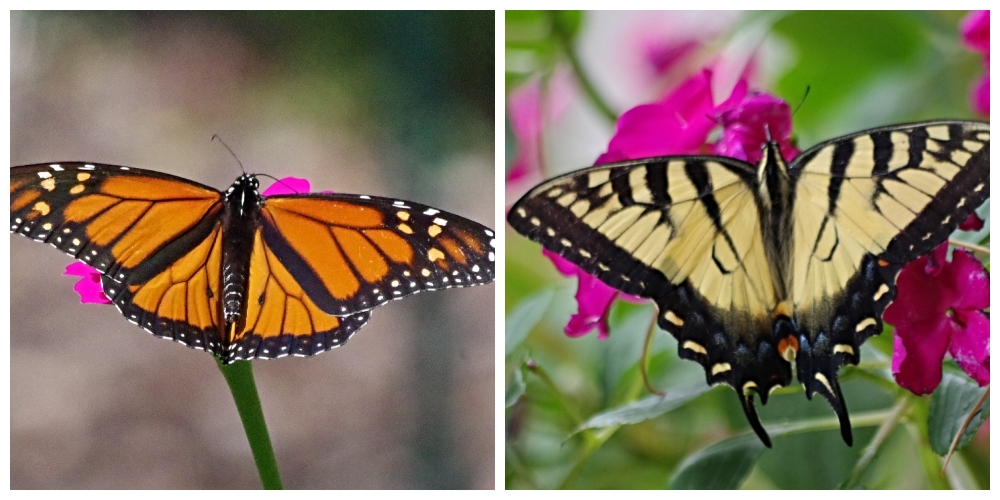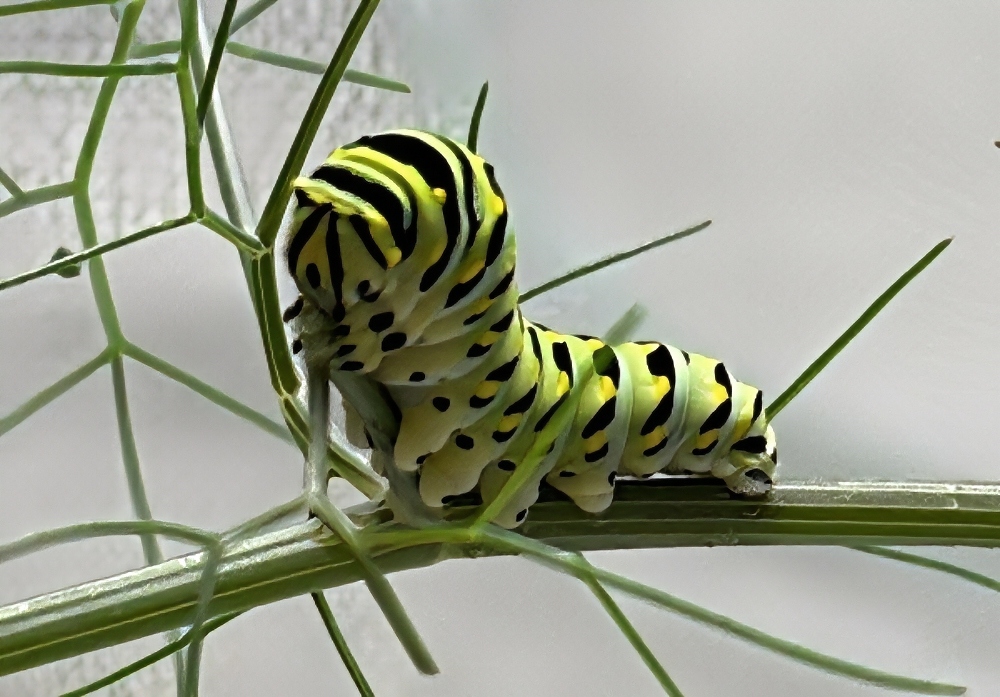
Every July when the Monarch butterflies arrive here in western, New York, it is time to start searching for eggs on the Milkweed plants.

When I see a butterfly landing on the Milkweed in the back garden, I always go out immediately to inspect the undersides of the leaves for the white dots. I gather the leaves with eggs and bring them inside. I put the stems into florist tubes filled with water and wait patiently for the eggs to hatch.
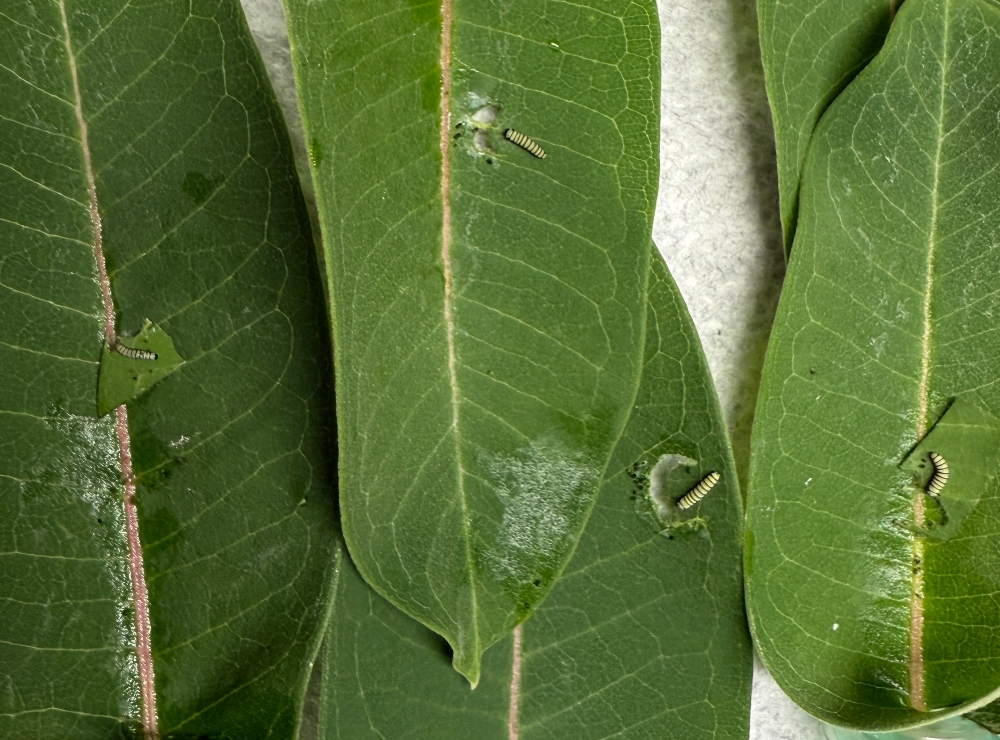
After 3 or 4 days the caterpillars emerge and begin feasting on the leaves. In this photo they are a few days old. You can see how tiny they are and the one on the left is the last one to hatch.
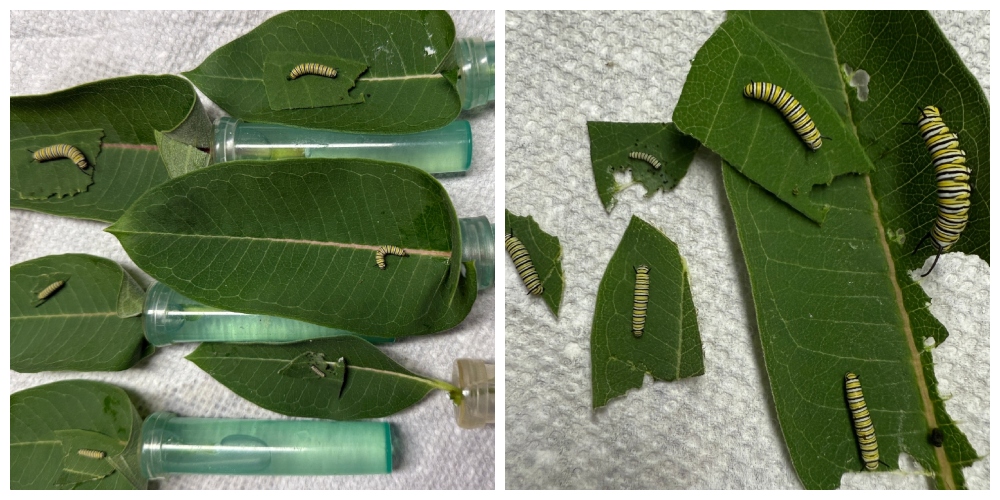
Every morning, I go out to cut fresh leaves from the Milkweed and transfer the caterpillars onto the new leaves.
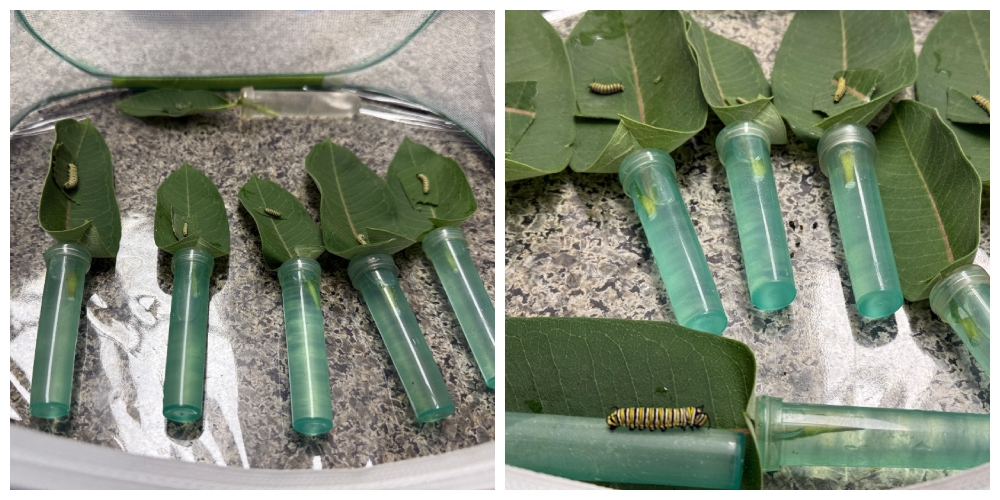
After I get the cage cleaned up, I put them back into the butterfly netting and put them in a quiet area so as not to disturb them. You can see how much they have grown in just a week. The oldest one is on top of one of the tubes and resting.
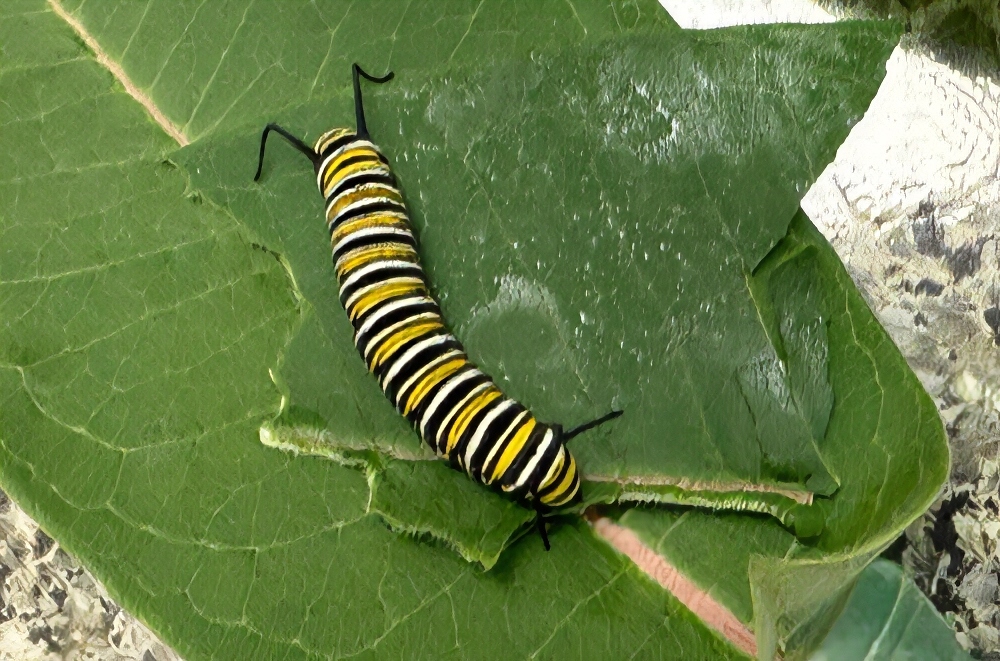
Once the caterpillars get towards the fifth instar stage, I put them into a small insect cage. This is where they will make a web at the top of the cage and enter into the J stage.
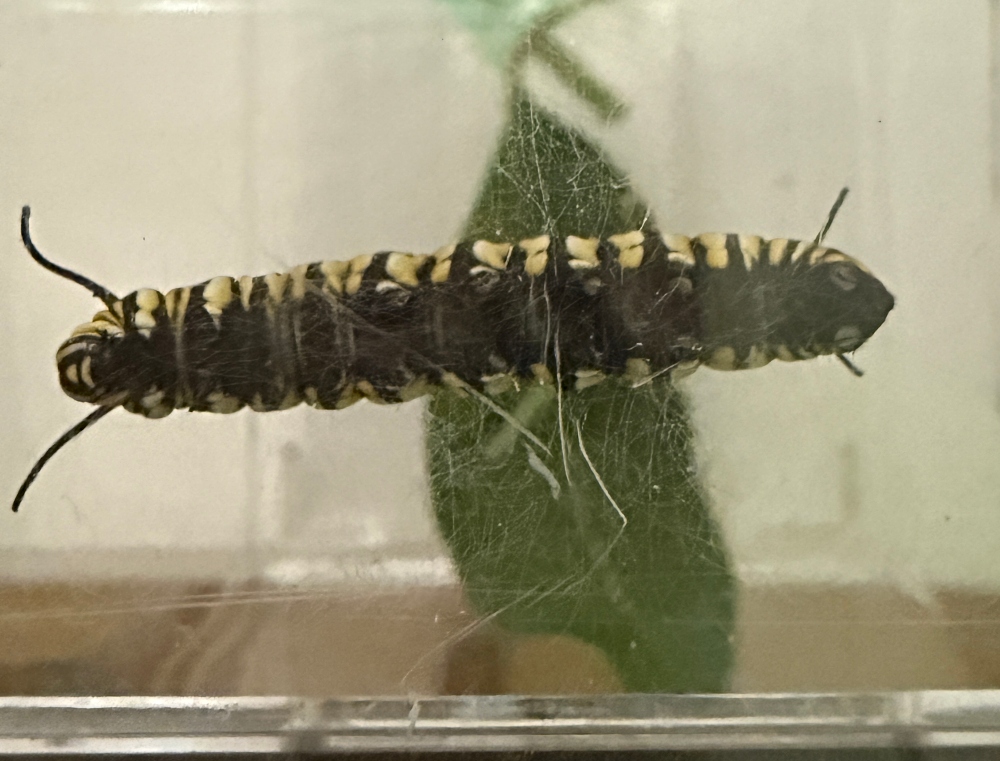
Here you can see the fine webbing he is putting on the top of the cage. This will hold him securely while he pupates and turns into a chrysalis. After 10-14 days the chrysalis turns very dark, and you can see the butterfly inside the casing.
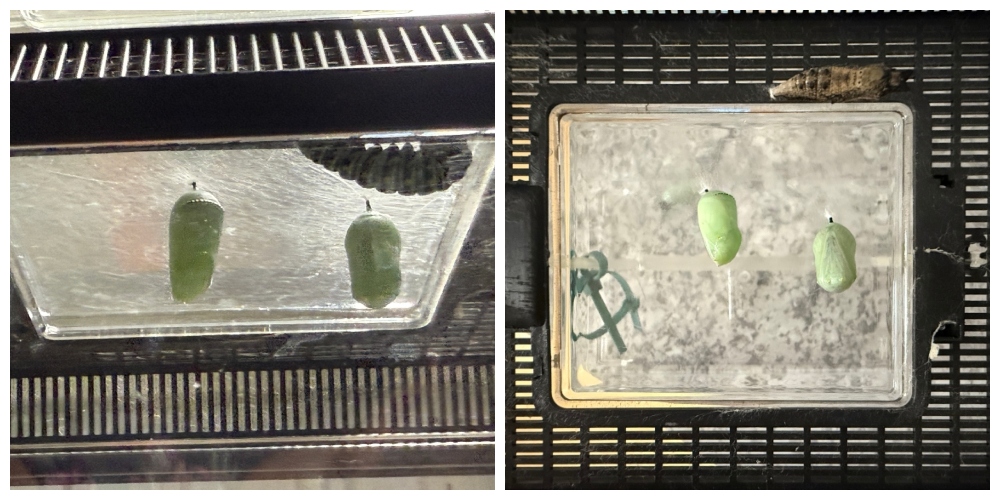

4 Stages of Monarch Life Cycle
There are four stages in a monarch life cycle: egg, larva (caterpillar), pupa, and adult.
Egg: They hatch about 3-4 days after they are laid. The female monarch lays the egg (ova; called ovipositing) on the underside of a milkweed (Asclepias) leaf.
Larva (caterpillar): The larva stages lasts 10-14 days after hatching. There are 5 instars (molting intervals). More on these below.
Pupa: The chrysalis stage also lasts about 10-14 days. During this pupal stage, the transformation
Adult: Once hatching from the pupa, the monarch is now an adult butterfly.
Source
Swallowtail Caterpillar

I also grow fennel and dill in the vegetable garden so that the Swallowtail butterflies have a place to lay their eggs too. This year I only found two caterpillars on the fennel plants. So, they got to enjoy their own little butterfly netting to grow in. I do the same process as with the Monarchs but change out a new branch of fennel each morning.
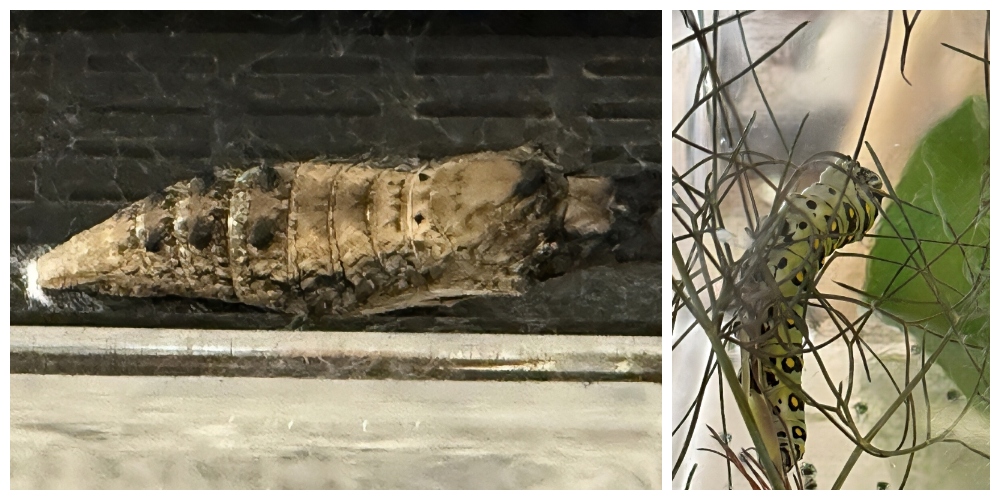
I watch them carefully when they get quite large and transfer them into the insect house along with the Monarchs. Here is a photo of the first one to make its cocoon.
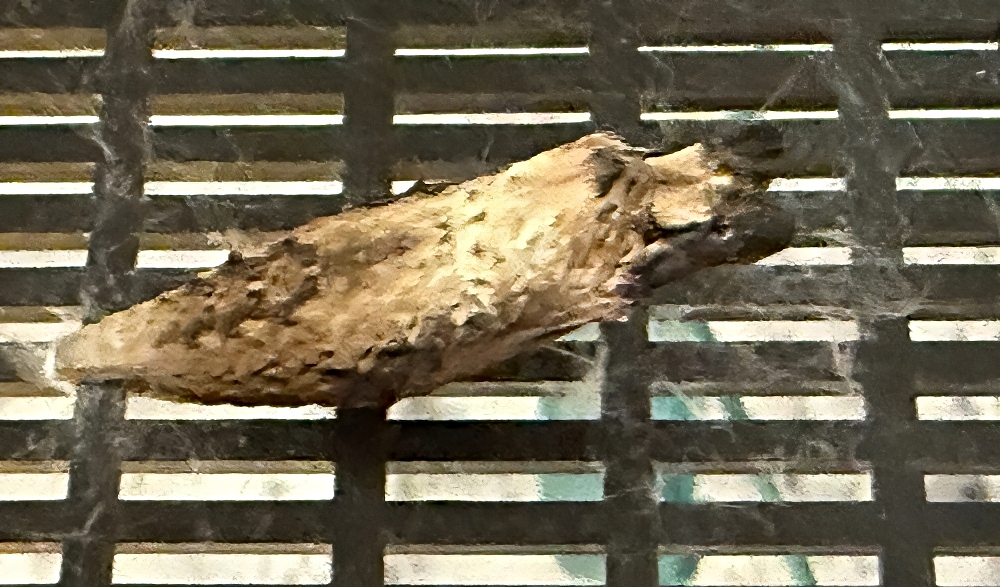
Lastly, the youngest one cocooned and now all the caterpillars are in their chrysalis stage.
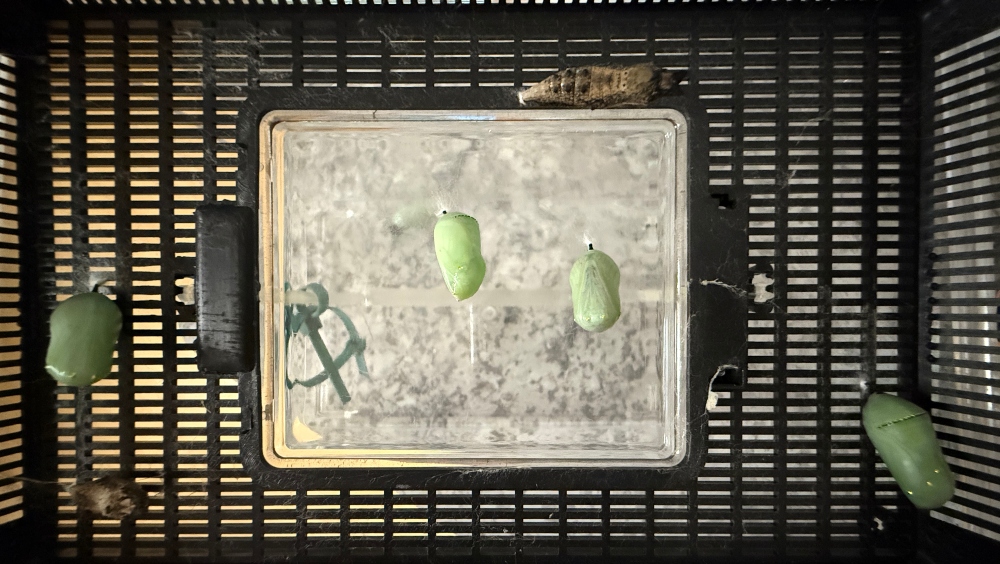
Now, it is just a matter of time before I will have photos to share of them emerging into the butterfly. Stay tuned for next week's update.
